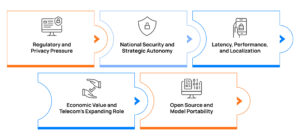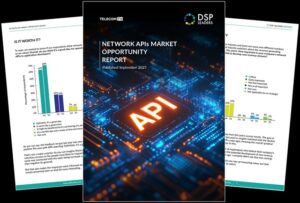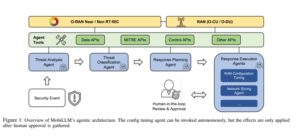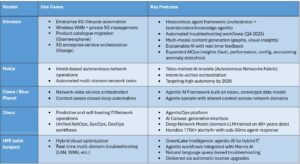The telecom industry is buzzing with the potential of Large Language Models (LLMs), but their integration into the complex, standards-driven world of telecommunications has been a tough nut to crack. A recent paper introducing the Telco-RAG framework offers a compelling solution, tackling the unique challenges of applying Retrieval-Augmented Generation (RAG) to the telecom sector, particularly with 3rd Generation Partnership Project (3GPP) standards. In this blog, I am diving into this paper and unpack how Telco-RAG is poised to reshape AI-driven innovation in telecom industry.
The Problem: Why LLMs Struggle in Telecom
Telecom networks are a beast of their own—generating massive, diverse, and ever-changing data, from network logs to performance metrics, all tightly governed by the intricate 3GPP standards. These standards, which define the backbone of mobile networks, are not only dense with technical jargon but also evolve rapidly, making it hard for traditional LLMs to keep up. The paper highlights several pain points that standard RAG systems face in this context:
-
Complex Standards: 3GPP documents are tough to understand without telecom expertise.
-
Ever-Changing Data: Networks shift constantly, so LLMs trained on old data can miss the mark.
-
Unclear Questions: Vague or poorly worded questions lead to wrong answers from LLMs.
-
High Resource Needs: LLMs need lots of memory and fine-tuning, which can be hard to manage.
These challenges aren’t just theoretical—they’re real barriers slowing down AI adoption in telecom. The authors of the Telco-RAG paper argue that standard RAG systems, while powerful, fall short in addressing the telecom sector’s unique needs. Enter Telco-RAG, an open-source framework designed to bridge this gap.
Telco-RAG: A Tailored Framework for Telecom
The Telco-RAG framework is a breath of fresh air, offering a telecom-specific approach to RAG that aligns LLMs with 3GPP standards. Unlike generic RAG systems that pull external data in real-time to enhance LLM responses, Telco-RAG is fine-tuned for the telecom domain. The paper outlines its key innovations:
-
Optimized Hyperparameters: Telco-RAG tweaks settings to handle the technical complexity of telecom data, ensuring better performance.
-
Query Augmentation: By incorporating glossaries and candidate answer enhancements, it sharpens the precision of user queries, tackling the issue of vague inputs.
-
Neural Network Router: This clever addition manages memory usage, making Telco-RAG more efficient and scalable than standard RAG systems.
The results? The paper’s experiments show that Telco-RAG significantly outperforms traditional RAG frameworks in both accuracy and efficiency. This means telecom professionals can rely on it to deliver standards-compliant solutions, from network optimization to regulatory adherence, with faster development cycles.

Why This Matters for Telecom
The implications of Telco-RAG are huge. By enabling LLMs to tap into 3GPP standards in real-time, it ensures that AI-driven tools are not only accurate but also compliant with the latest protocols. This is critical for telecom companies racing to deploy 5G and prepare for 6G, where standards evolve at breakneck speed. Telco-RAG’s ability to handle dynamic data and optimize resources also makes it a practical choice for edge computing and on-device applications, paving the way for autonomous, AI-driven networks.
Beyond telecom, the paper’s authors suggest that Telco-RAG’s principles—optimized hyperparameters, query enhancements, and efficient memory management—could be adapted to other technical fields. This makes it a blueprint for industries grappling with complex, standards-driven data.
Questions for Telecom Leaders
Telco-RAG opens new doors, but it raises big questions for the future. Here are three for telecom leaders to think about:
-
How can telecom operators leverage Telco-RAG to accelerate the deployment of AI-driven solutions while ensuring cost-efficiency in resource-constrained environments like edge networks?
-
What collaborative efforts are needed to standardize frameworks like Telco-RAG across vendors, ensuring seamless integration with global 3GPP standards?





Be First to Comment